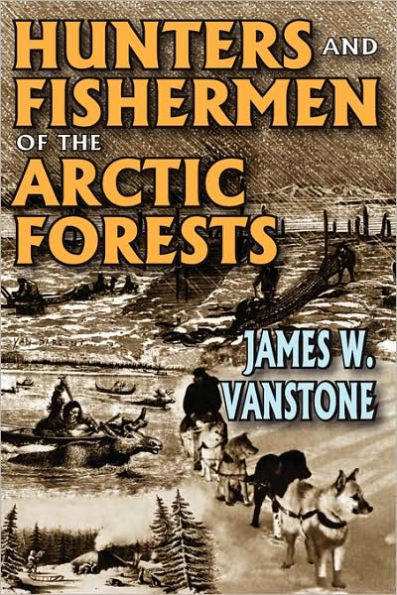VanStone has captured the elements of the basic adaptive strategy by which these Indians mastered their intransigent environment and made it their home over many centuries, and in doing so, he has perhaps also found the reasons why they have not had as much impact on Western thought as other Native Americans. The Plains Indians, with the blood and thunder of their raidings, the individual drama of their vision quests, appealed to that part of our culture that was forged on the frontier where both action and isolation were primary qualities. The Eskimos, with their elaborate technology for extracting a livelihood from the Arctic ice appealed to Yankee ingenuity.
Athapaskan culture was of a different order—less dramatic, but no less adaptive. Northern lands are not richly endowed with sustenance for human life. These adaptations have not only required proficiency with tools and techniques for exploiting this difficult habitat, but also the creation of institutions for collaboration in these endeavors. Hunters and Fishermen of the Arctic Forests illuminates this relatively obscure area of the world and brings it, and the cultures it supported, into the context of modern anthropological research.
VanStone has captured the elements of the basic adaptive strategy by which these Indians mastered their intransigent environment and made it their home over many centuries, and in doing so, he has perhaps also found the reasons why they have not had as much impact on Western thought as other Native Americans. The Plains Indians, with the blood and thunder of their raidings, the individual drama of their vision quests, appealed to that part of our culture that was forged on the frontier where both action and isolation were primary qualities. The Eskimos, with their elaborate technology for extracting a livelihood from the Arctic ice appealed to Yankee ingenuity.
Athapaskan culture was of a different order—less dramatic, but no less adaptive. Northern lands are not richly endowed with sustenance for human life. These adaptations have not only required proficiency with tools and techniques for exploiting this difficult habitat, but also the creation of institutions for collaboration in these endeavors. Hunters and Fishermen of the Arctic Forests illuminates this relatively obscure area of the world and brings it, and the cultures it supported, into the context of modern anthropological research.

Hunters and Fishermen of the Arctic Forests
176
Hunters and Fishermen of the Arctic Forests
176Paperback(Revised ed.)

Product Details
| ISBN-13: | 9780202362779 |
|---|---|
| Publisher: | Transaction Publishers |
| Publication date: | 02/15/2009 |
| Edition description: | Revised ed. |
| Pages: | 176 |
| Product dimensions: | 5.90(w) x 8.90(h) x 0.50(d) |
